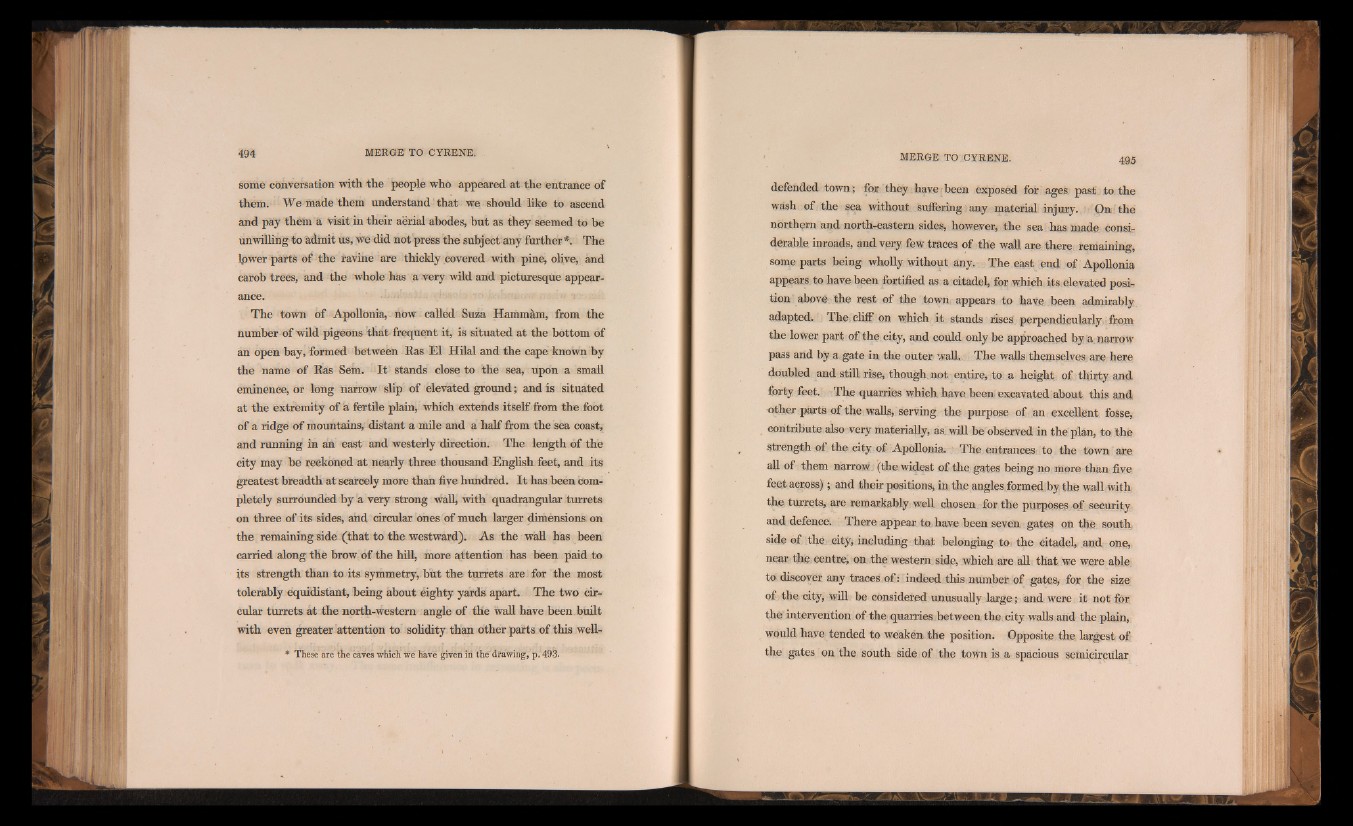
Some conversation with the people who appeared at the entrance of
them. We made them understand i that we should like to ascend
and pay them a Visit in their aerial abodes, but as they seemed to be
unwilling to admit us, we did not press the subject any further *. The
lpwer parts of the ravine are thickly covered with pine, olive, and
carob trees, and the whole has a very wild and picturesque appearance.
The town of Apollonia, now called Suza Hamm am, from the
number of wild pigeons that frequent it, is situated at the bottom of
an open bay, formed between Eas El Hilal and the cape known by
the name of Eas Sem. I t stands close to the sea, upon a small
eminence, or long narrow shp of elevated ground; and is situated
at the extremity of a fertile plain, which extends itself from the foot
of a ridge of mountains, distant a mile and a half from the sea coast,
and running in an east and westerly direction. The length of the
city may be reckoned at nearly three thousand English feet, and its
greatest breadth at scarcely more than five hundred. I t has been Completely
surrounded by a very strong Wall, with quadrangular turrets
on three of its sides, and circular ones of much larger dimensions on
the remaining side (that to the westward). As the waH has been
carried along the brow of the hill, more attention has been paid to
its strength than to its symmetry, but the turrets are: for the most
tolerably equidistant, being about eighty yards apart. The two circular
turrets at the north-western angle of the wall have been built
with even greater attention to solidity than other parts of this well-
* TBese are the caves which' we have giveii in the'dfawing, p. 493.
defended town; far they have been exposed for ages past to the
wash of the sea without suffering any material injury. On the
northern and north-eastern sides, however, the sea has made considerable
inroads, and very few traces, of the wall are there remaining,
some parts being wholly without any. The east end of Apollonia
appears to have been fortified as a citadel, for which its elevated position
above the rest of the town, appears to have been admirably
adapted. The. cliff on which it stands rises perpendicularly from
the lower part of the city, and could only be approached by a narrow
pass and by a gate in the outer wall. The walls themselves, are here
doubled and still rise, though, not entire, to a height , of thirty and
forty feet. The quarries which have been excavated about this and
other parts of the walls, serving the purpose of an excellent fosse,
contribute also very materially, as. will be observed in the plan, to the
strength of the city of Apollonia. The entrances to the town are
all of them narrow (the widest of the gates being no more than five
feet across); and their positions, in the angles formediby the wall with
the turrets, are remarkably well chosen for the purposes of security
and defence There appear to. have been seven gates on the south,
side of the, city, inelmding that belonging to. the citadel, and one,
near the, centre, on the western side, which are all that, we were able
to discover any traces of: indeed this, number of gates, for the size
of the city, will be considered unusually large; and were it not for
the intervention of the quarries between the city walls and the plain,
would have tended to weaken the position. Opposite the largest of
the gates on the south side of the town is a spacious semicircular